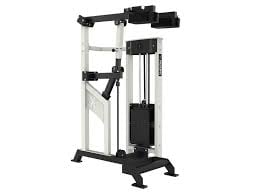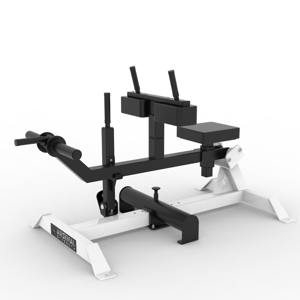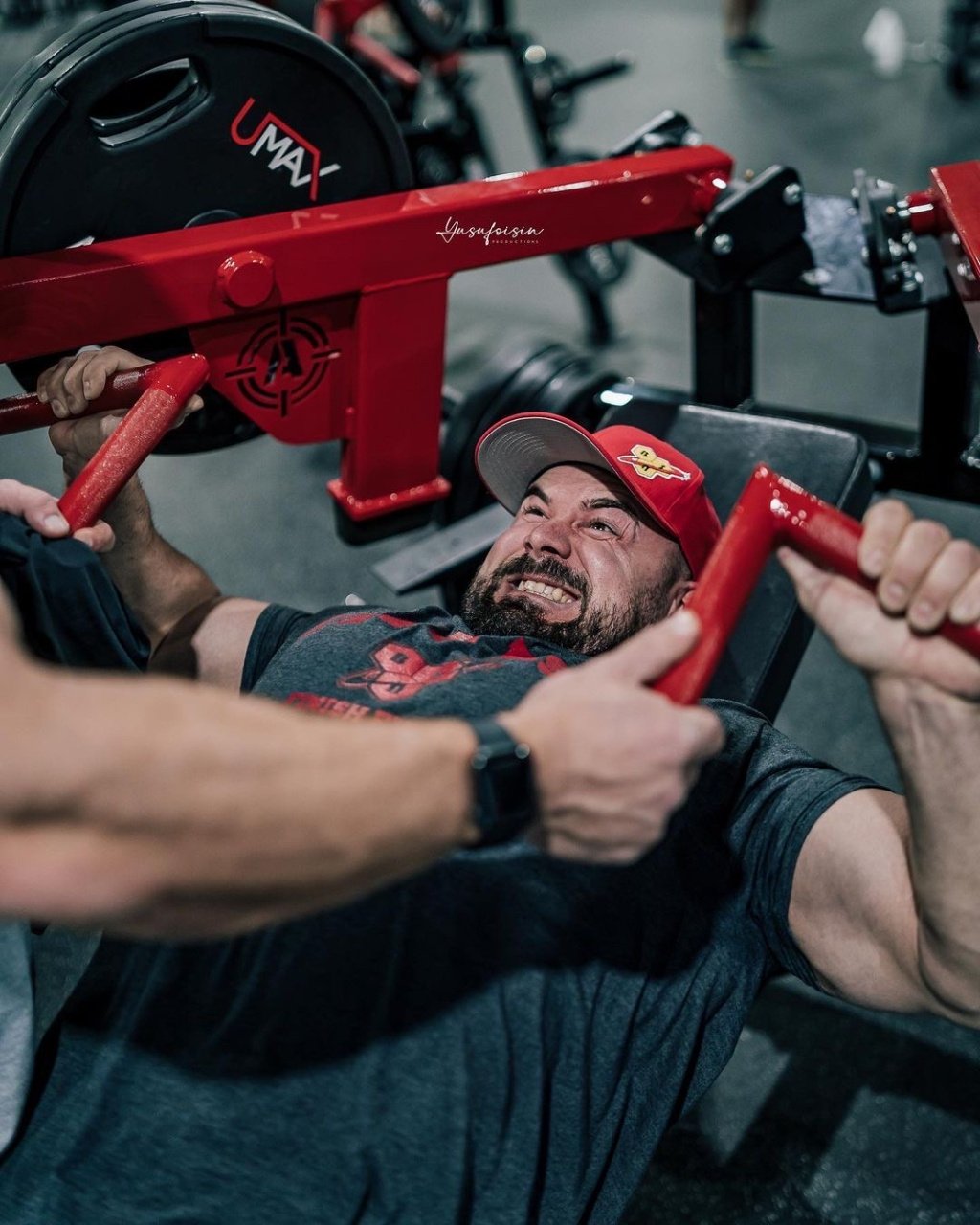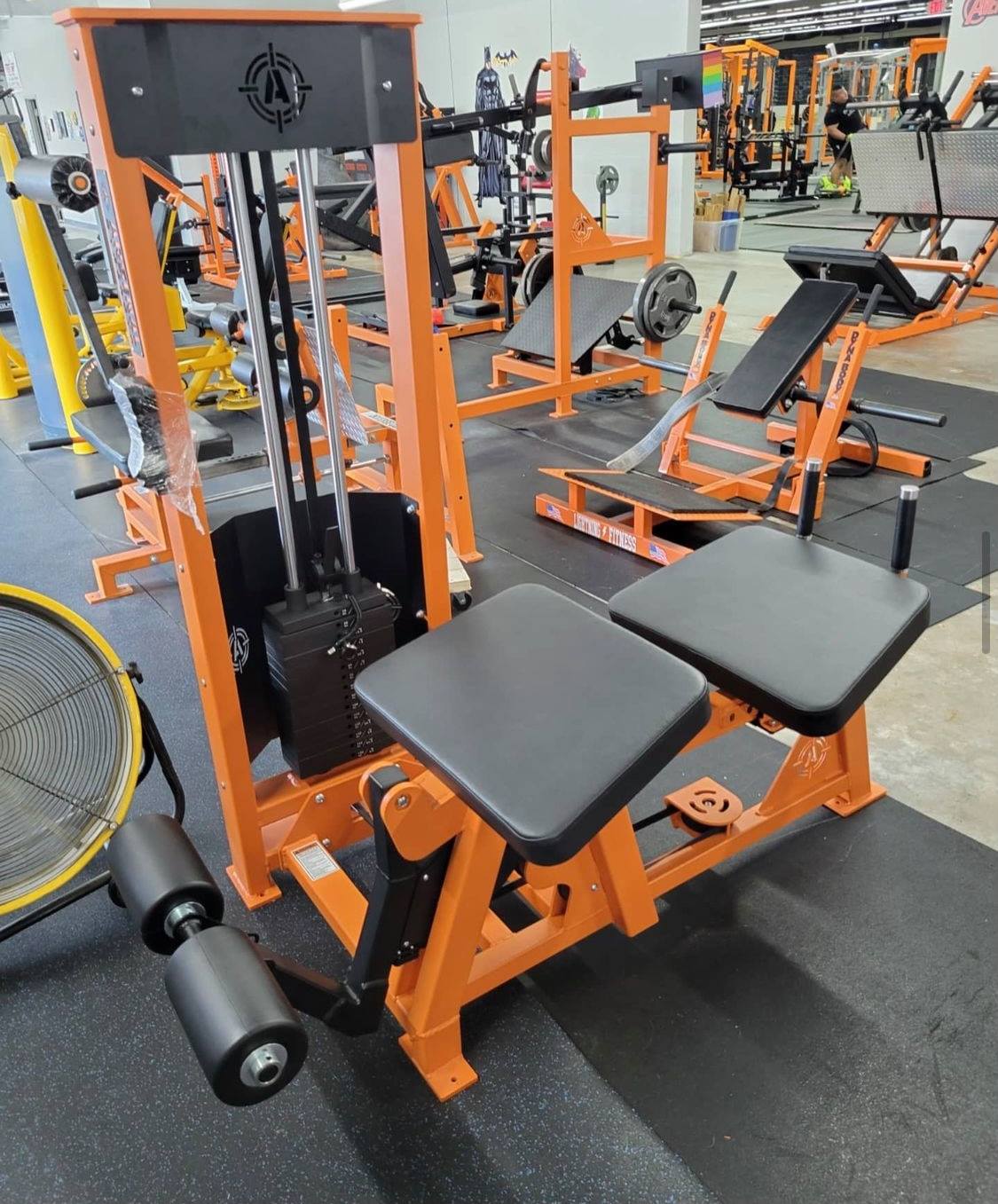Master the Donkey Calf Raise Machine
Techniques for Stronger, Sculpted Calves
Are calf raises the key to stronger, sculpted calves? Absolutely. Master the calf raise with our no-nonsense guide to proper form, intelligent variations, and common pitfalls to avoid. This article provides the essentials for elevating your lower leg strength and aesthetics while keeping it concise, practical, and free from fluff.
- Proper technique in calf raise involves understanding muscle anatomy, correct starting position, and progressively increasing intensity with weights, expanding range of motion, and altering tempo.
- Variations in calf raise exercises, including standing, seated, and on the leg press machine, target different muscles and can be enhanced with adjustments in foot positioning, knee flexion, and load balancing.
- To avoid common mistakes and ensure effective calf training, it’s crucial to maintain a slow pace, focus on balance and stability, and integrate calf raises into workout routines responsibly, considering any contraindications or injuries.
Unlocking the Power of The Donkey Calf Raise
If you’ve ever thought that calf exercises are a simple exercise, think again. The calf muscles, specifically the gastrocnemius and soleus, play a significant role in enhancing overall lower leg strength balance, and muscle definition.
By grasping the anatomy and mechanics of the calf raise you can help exploit its benefits to the fullest.
The Anatomy of a Calf Raise
The gastrocnemius and soleus muscles are the primary muscles engaged in executing a calf raise. These muscles aid in the improvement of leg strength by facilitating plantar flexion of the ankle joint, a crucial movement in a range of athletic activities and daily routines. But it’s not just about these muscles - the Achilles tendon also plays a crucial role in calf raises by transmitting the force produced by the calf muscles to the heel bone, enabling the action of raising the heels off the ground. Many athletes find calf raises helpful in preventing injuries to important connecting tendons and ligaments. What is the best form in performing these crucial exercises?
Starting Position and Execution
The positioning of your feet on a step or stair is the starting point of a calf raise. Maintaining your feet shoulder-width apart, with a slight knee bend and shoulders directly over the hips, is vital for correct alignment.
Moreover, remember your core - activating it during calf raises strengthens both calf and core muscles, leading to better balance and spinal stability throughout the exercise.
Adding Intensity to Your Calf Exercise
Like any other exercise, increasing the intensity of your calf raise can foster progress and yield better results. Incorporating weights into calf raises elevates the intensity, further engaging the muscles and fostering enhanced muscle growth and strength.
Expanding the range of motion in calf raises facilitates a more extensive stretch and contraction of the calf muscles, resulting in heightened intensity. Altering the tempo during calf raises can also elevate the intensity by extending the time under tension and enhancing muscle activation.
Elevating Your Calf Workout: Standing Calf Raise
The versatility of standing calf raises allows them to be performed anywhere, whether you have weights or not. They involve standing on a flat surface with toes pointed forward, lifting the heels off the floor to engage the calf muscles. There are several ways to elevate your standing calf raise workout, such as performing them one leg at a time, changing your foot position, and utilizing raised surfaces.

One Leg at a Time: Single Leg Calf Raise
Single-leg exercises engage more than just the gastrocnemius and soleus leg muscles - they also involve stabilizing muscles like:
- the gluteus medius
- the gluteus minimus
- the quadratus lumborum
- the obliques
To ensure stability, utilize a bench or support for assistance and concentrate on upholding an erect posture.
The Importance of Foot Position
The position of the feet during standing calf raises has a significant impact on the distribution of muscle engagement within the calf. For example, rotating the toes inward increases the activation of the inner calf muscles, while adjusting the toe angles allows for targeted emphasis on either the inner or outer sections of the gastrocnemius muscle. For optimal calf muscle engagement, your feet should be shoulder-width apart and pointing forward, ideally while standing on an exercise or yoga mat. This will help in targeting the muscles effectively..
However, bear in mind that improper foot positioning during calf raises may result in uneven muscle development and elevate the likelihood of injuries, such as overuse injuries to the foot, ankle, calf, and potentially the knee.
From Flat Ground to Raised Surfaces
Raising the bar, or rather the surface, can make a significant difference in your calf raise exercises. Executing calf exercises on a raised surface allows the muscles to strengthen throughout their complete range of motion, potentially offering superior muscle engagement in comparison to calf raises performed on a flat surface.
So, don’t hesitate to use the edge of a step, an aerobic step, a block, or any other surface that allows your heels to drop below your toes.
Seated Calf Raise Machine: Focused Muscle Building
Seated calf raises offer a focused way to target specific calf muscles, particularly the soleus muscle. By sitting down and placing the balls of your feet on the platform, maintaining a hip-width distance between the feet, you can perform this exercise.
Yet, seated calf raises involve more than just sitting - modifying your position and adding weight can further optimize muscle building.

Knee Flexion and Muscle Activation
Knee flexion is an important aspect of seated calf raises, as it isolates and activates the soleus muscle. By bending the knees in the seated position, you can effectively target this muscle, which is crucial for plantar flexion.
Techniques for Seated Calf Strength
Several techniques are available to boost your calf strength during seated calf raises. Additional weight can be added, an elevated surface can be used to increase range of motion, or the exercise can be performed one-legged.
To build strength with seated calf raises, it is recommended to perform 2-3 sets of 8-15 repetitions each.
Compound Exercise Integration: Leg Press Machine
Incorporating calf raises into compound exercises with the leg press machine opens up numerous benefits, like stabilizing and fortifying the ankle joint, boosting mobility and flexibility, and contributing significantly to injury prevention.
But how can you balance the load on the leg press machine for even weight distribution and optimal calf development?
Proper Form on the Leg Press
Maintaining the proper form on the leg press machine is key to optimizing calf muscle activation and reducing the risk of injury. Proper positioning involves:
- Pressing on the platform by raising your heels as you breathe out
- Extending your ankles as high as possible
- Pushing back as far as you can while keeping your feet against the platform
And remember, different foot placements can selectively activate specific areas of the gastrocnemius.
Balancing the Load: Even Weight Distribution
When it comes to balancing the load on the leg press machine, your weight should be evenly distributed over all your toes while raising the heels as high as possible. Keeping this balance during leg press calf raises is vital for stabilizing and fortifying the calf muscles, leading to enhanced leg strength and stability in the end.
Advanced Calf Raise Variations
If you’re proficient in basic calf raise variations, consider challenging yourself with more advanced versions. Jump training enhances calf raise exercises by improving the ability to jump higher. On the other hand, incorporating dynamic movement into calf raises offers various advantages such as overall stability, reduced stress on the Achilles tendon, improved explosive power, joint stabilization, and enhanced athletic performance.
Explosive Power: Jump Training
Jump training exercises such as box jumps can significantly enhance the strength of calf muscles, improve jumping ability, enhance ankle stability, and increase muscle thickness. So, if you want to take your calf training to the next level, try:
- Introducing a slight hop at the top of each step to enhance power
- Utilizing the balls of the feet as the foundation for propelling into the jump
- Employing a forward arm swing to aid in launching onto the box
Dynamic Movement: Walking Calf Raises
Walking calf raises offer another advanced variation of calf raises that can significantly improve muscular activation and functional movement. Here’s how to do them:
- Stand with your feet shoulder-width apart and toes pointing forward.
- Raise your heels off the ground as high as possible, feeling the stretch in your calves.
- Hold for a moment, then lower back down.
- Repeat while walking.
Walking calf raises offer the additional advantage of engaging muscles during walking, making it more relevant to everyday movements.
Calf Raise Mistakes to Avoid
Despite calf raises seeming like a straightforward exercise, common errors can lower their effectiveness and heighten the risk of injury. Rushing through the movement, for example, can diminish the effectiveness in developing calf strength and size. Moreover, maintaining balance during calf raises is crucial as it plays a key role in overall stability, minimizes strain on the Achilles tendon, and improves the effectiveness and balance of the exercise.
Rushing the Movement
As with many exercises, slow and steady wins the race when it comes to calf raises. The most effective speed for calf raise exercises is a slow, controlled pace, as it has a greater impact on muscle activation and growth compared to quickly performed calf raises.
So, remember to take your time and focus on the quality of the movement rather than the speed, using just your bodyweight.
Losing Balance and Stability
Keeping balance during calf raises is key to ensuring the effectiveness of the exercise and preventing injuries. To enhance balance, you can engage in slow, one-legged calf raises and alternate between legs. Additionally, performing calf raises off the back of a step or a raised platform can aid in improving ankle range of motion.
Stability can also be achieved by maintaining a straight back, keeping the shoulders back and down, engaging the abs, and lifting the heels slowly with extended but not locked knees.
Integrating Calf Raises into Your Routine
Given their versatility, calf raises can be seamlessly integrated into your workout routine. Whether you’re a beginner or an advanced athlete, incorporating calf raises two to three times per week can significantly enhance your calf strength and overall lower body performance.
You can include Donkey Calf Raises and Toe Touch Farmer’s walks for comprehensive calf development or, for a more advanced regimen, include box jumps followed by double-leg and single-leg calf raises.
Safety First: Precautions and Contraindications
Although calf raises are generally safe, it’s always important to prioritize safety and consider any personal limitations or injuries. To ensure safe execution of calf raises, it’s advisable to:
- Proceed with caution
- Maintain a slight knee bend
- Avoid overloading
- Focus on controlled movements during both the lifting and lowering stages
If you have a recent history of lower-body injury, it’s advisable to seek guidance from a medical professional before intensifying calf training frequency or participating in high-impact exercises.
Individuals with physical limitations can modify calf raise exercises by utilizing a chair for support, performing the exercise in a seated position, or focusing on ankle flexion if lifting the entire foot is too challenging. In order to prevent knee pain during calf raises, you can incorporate Tibialis Raises, Wall Lean Calf Raises, Soleus Raises, Reverse Step Ups, Split Squats, and VMO exercises into your routine.
In summary, calf raises are a versatile and effective exercise for strengthening the calf muscles and enhancing overall lower body performance. Whether you’re a beginner or an advanced athlete, incorporating calf raises into your routine can help you achieve your fitness goals. Remember, slow and steady wins the race - so take your time, maintain proper form, and don’t rush through the movement. And always prioritize safety to avoid injuries. So, are you ready to raise the bar and elevate your calf workouts to the next level?
Frequently Asked Questions About Calf Raises
What are calf raises good for?
Calf raises are good for strengthening the calves and promoting healthier ankles. Regularly incorporating calf raises into your workout routine can help improve lower leg strength and stability.
How do you do calf raises correctly?
To perform calf raises correctly, stand tall with your feet hip-width apart, then lift your body by pushing into the fronts of your feet and return to a regular stance. This activates your calf muscles and is the correct way to perform calf raises.
How long should each calf raise be?
Each calf raise should follow the "2-1-2-1" rule, with a two-second lift, one-second pause at the top, two-second lowering, and one-second pause at the bottom before repeating. This ensures proper form and maximizes effectiveness.
How many calf raises a day?
Start with three sets of 15-20 reps of calf raises, adjusting based on your fitness level. Consider adding one-leg calf raises or using weights to increase strength.
How can I add intensity to my calf raises?
To add intensity to your calf raises, consider incorporating weights, increasing the range of motion, or altering the tempo in your exercise routine.
Additional Resources:
Bilateral Leg Press: https://www.youtube.com/watch?v=0FOAfwG8lCI
Pendulum Squat Machine: https://www.youtube.com/watch?v=jnWgrCYSVLM
Belt Squat Machine: https://www.youtube.com/watch?v=7l1kU5j6Shk






